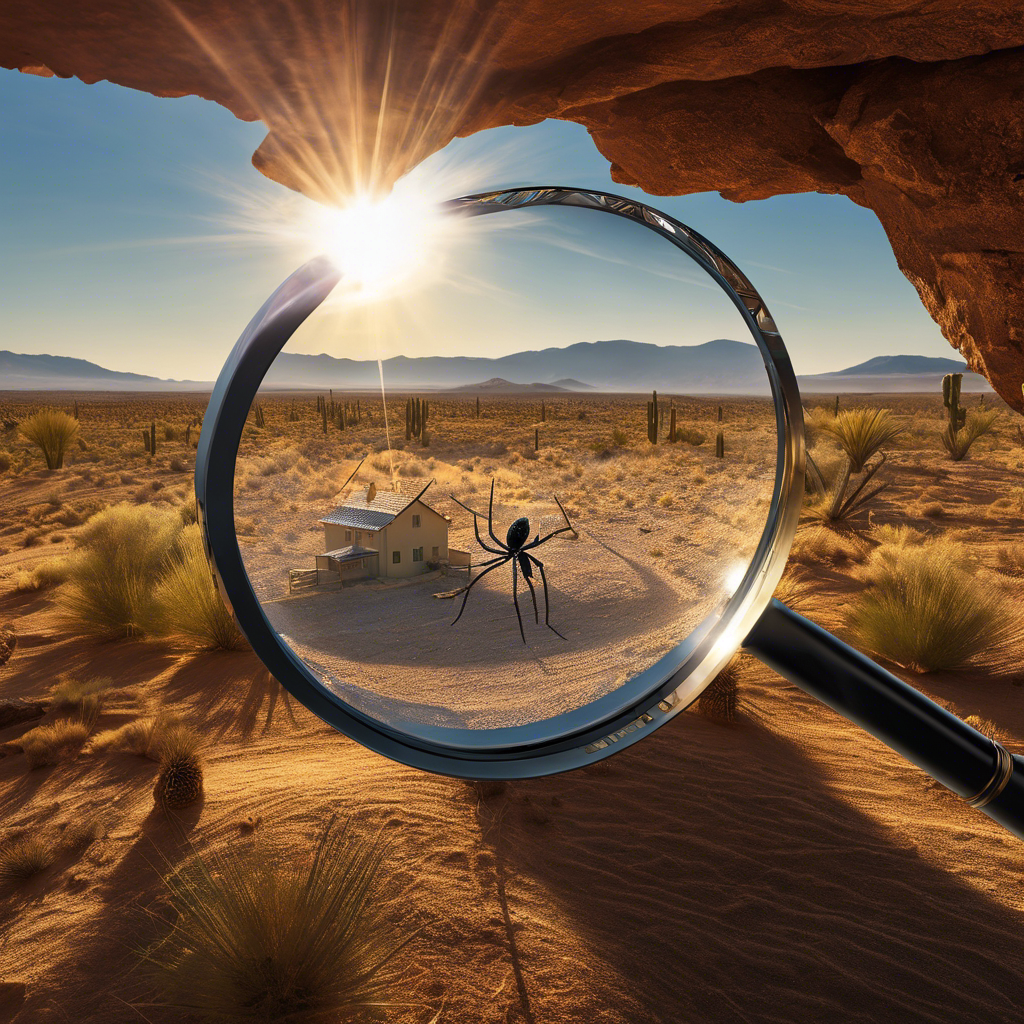In St. George, spiders weave their silken threads not just in the corners of your home, but into the fabric of our daily lives, often unnoticed until their presence becomes an unwanted infestation.
You’ve likely encountered these eight-legged guests in dark, secluded areas, signaling a need for a deeper understanding of their behavior for effective control. Recognizing the unique habits and nesting preferences of different species is the first step in untangling the complexity of managing them.
As you ponder the effectiveness of store-bought pesticides and consider professional intervention, remember that knowledge about these creatures’ life cycles and entry points is your best ally in keeping them at bay.
Let’s explore how an informed approach can lead to successful spider management in your home.
Key Takeaways
- Identifying spider-prone areas and understanding seasonal habits are crucial for effective control.
- Decluttering and sealing entry points deter spiders by removing shelter and access.
- Knowing specific spider species, like the Woodlouse spider and Black Widow, aids in targeted control strategies.
- Regular maintenance and professional pest control services ensure long-term spider management.
Spider Behavior Basics
Understanding the behavioral tendencies of St. George’s spiders, particularly their preference for dark, moist environments, is essential for developing effective control strategies. Spider behavior, characterized by their choice of basements, attics, crawl spaces, and closets for egg sacs, underlines the necessity for professional intervention.
These hidden egg sacs, teeming with potential spider infestations, are often beyond the reach of over-the-counter pesticides, demanding thorough elimination tactics. Identifying areas prone to these pests and addressing problem areas enhances prevention measures.
Effective control hinges on a deep understanding of spider behavior, requiring a blend of professional help and proactive homeowner action. Ultimately, mastering spider behavior is key to safeguarding your home against future invasions, fostering a sense of belonging and security within your community.
Seasonal Habits of Spiders
Tracking the seasonal habits of spiders in St. George reveals a major increase in indoor activity during fall, as they seek refuge from the dropping temperatures. This period is important for implementing spider control measures to fend off indoor infestations and minimize encounters with these arachnids in your home.
Understanding spider behavior across seasons allows for the deployment of targeted strategies effectively managing their presence. While warmer months witness heightened outdoor spider activity, preying on insects, colder months push them indoors, questing for warmth and shelter.
Diligently monitoring and adjusting control methods in response to these seasonal shifts can greatly contribute to maintaining a pest-free environment in St. George, ensuring you and your loved ones feel a sense of belonging in a secure, spider-free home.
Attractants and Deterrents
To effectively manage spider populations in St. George, it’s indispensable to identify the attractants that draw them into homes and the deterrents that can keep them at bay. Spider behavior is greatly influenced by the presence of abundant insect populations, particularly in homes plagued by flying insects like mosquitoes and flies.
Cluttered spaces offer shelter, making regular decluttering a crucial prevention strategy. Exterior lighting inadvertently attracts insects, subsequently drawing spiders in search of food sources. Additionally, thick vegetation near homes serves as an ideal habitat for insects, further enticing spiders.
Implementing exclusion methods, such as sealing cracks and gaps, can effectively deter spiders from entering homes and establishing infestations. Understanding these dynamics is essential for those seeking to belong to a community free of spider infestations.
Identifying Common Spiders
What distinguishes the common spiders of St. George, such as the Woodlouse spider and the Black Widow, are their unique characteristics and behaviors that are essential for targeted control measures.
You’re part of a community that values understanding and coexistence with our many-legged neighbors. The identification of spider species, from the harmless Jumping spider to the venomous Black Widow, is vital. It allows for the implementation of effective strategies and tailored solutions, ensuring safety and prevention.
Spider behavior in St. George varies greatly; hence, recognizing these differences is key to controlling their presence effectively. Specialists in Shakespeare Pest Control are adept at handling various spider species, providing targeted solutions that cater to each spider’s unique habits.
Your knowledge and awareness contribute to a safer, spider-smart St. George.
Effective Control Strategies
Having identified the common spiders in St. George and their behaviors, it’s now important to focus on the strategies that effectively control their presence in our homes and communities.
Key to this approach is employing a thorough pest control strategy. A detailed inspection is essential to identify potential entry points and problem areas. Exclusion techniques, such as sealing cracks and crevices, prevent future infestations. Professional spider control services offer customized treatment plans, tailored specifically to your property’s needs, ensuring that even hidden egg sacks are eradicated.
Regular maintenance and professional guidance are indispensable in this battle against spiders, providing the most effective control measures. By embracing these strategies, you’re not just protecting your home; you’re joining a community committed to creating safer, spider-free environments.
Frequently Asked Questions
What Are the Methods of Control of Spiders?
You’ll use spider identification, natural repellents, chemical sprays, and environmental modifications for control. Web removal, prevention strategies, professional extermination, sealing entry points, controlling humidity, and managing light are key. It’s about creating a welcoming, spider-free environment together.
How Effective Are Spiders at Pest Control?
Spiders are highly effective at pest control, thanks to their diverse diet, natural predatory skills, and unique web construction. Their nocturnal activities, prey capture techniques, and seasonal behaviors greatly impact ecological balance and biological pest control.
How Do I Permanently Get Rid of Spiders?
To permanently banish spiders, think of your home as a fortress. Seal entries, deploy repellent plants, welcome natural predators, and maintain a clutter-free environment. Use monitoring traps and chemical treatments judiciously for a spider-free haven.
When Should I Call Pest Control for Spiders?
You should call pest control for spiders when you spot signs of infestation, encounter harmful species, or notice increased seasonal activity. Early professional evaluation prevents health risks and identifies natural predators and prevention strategies effectively.




